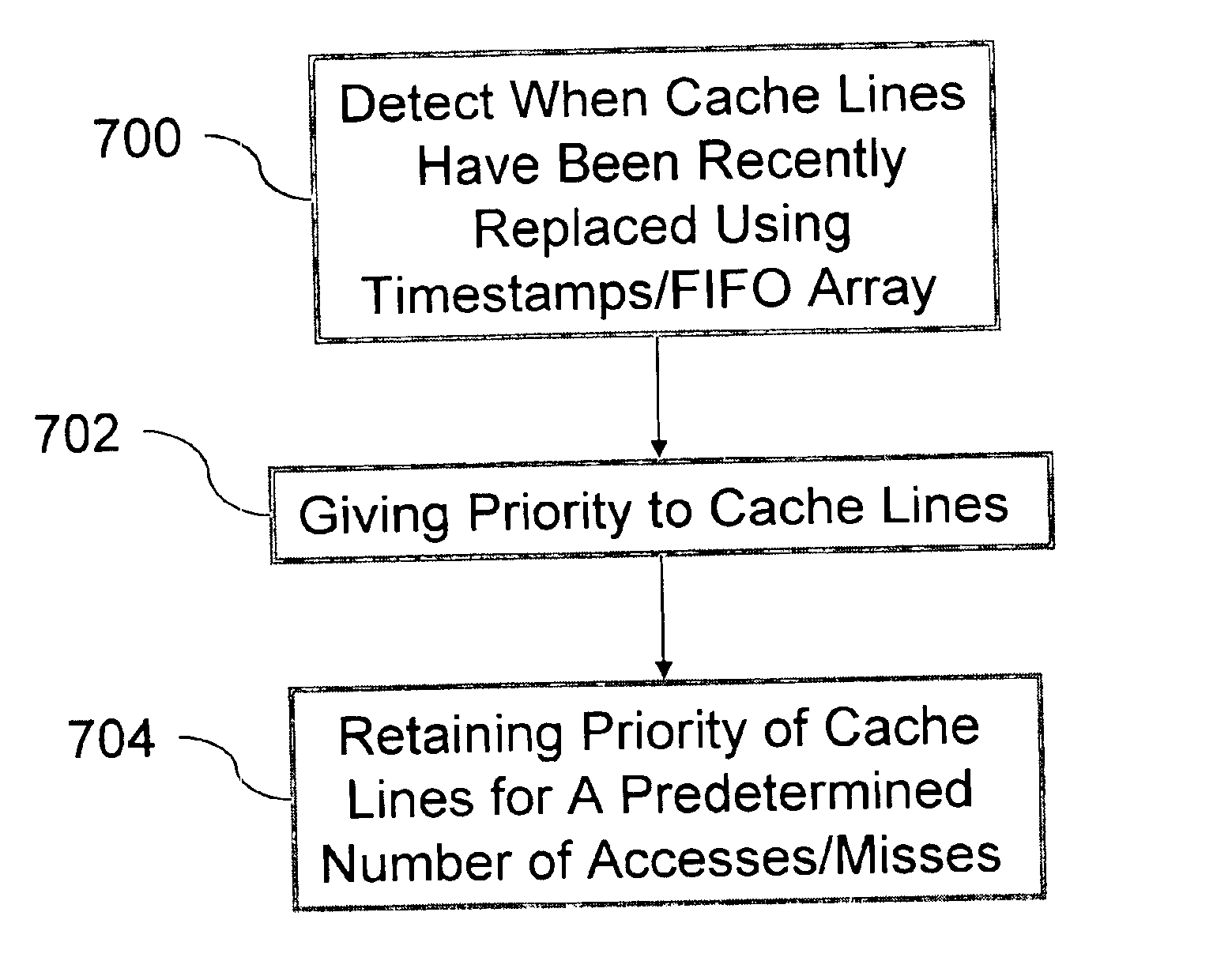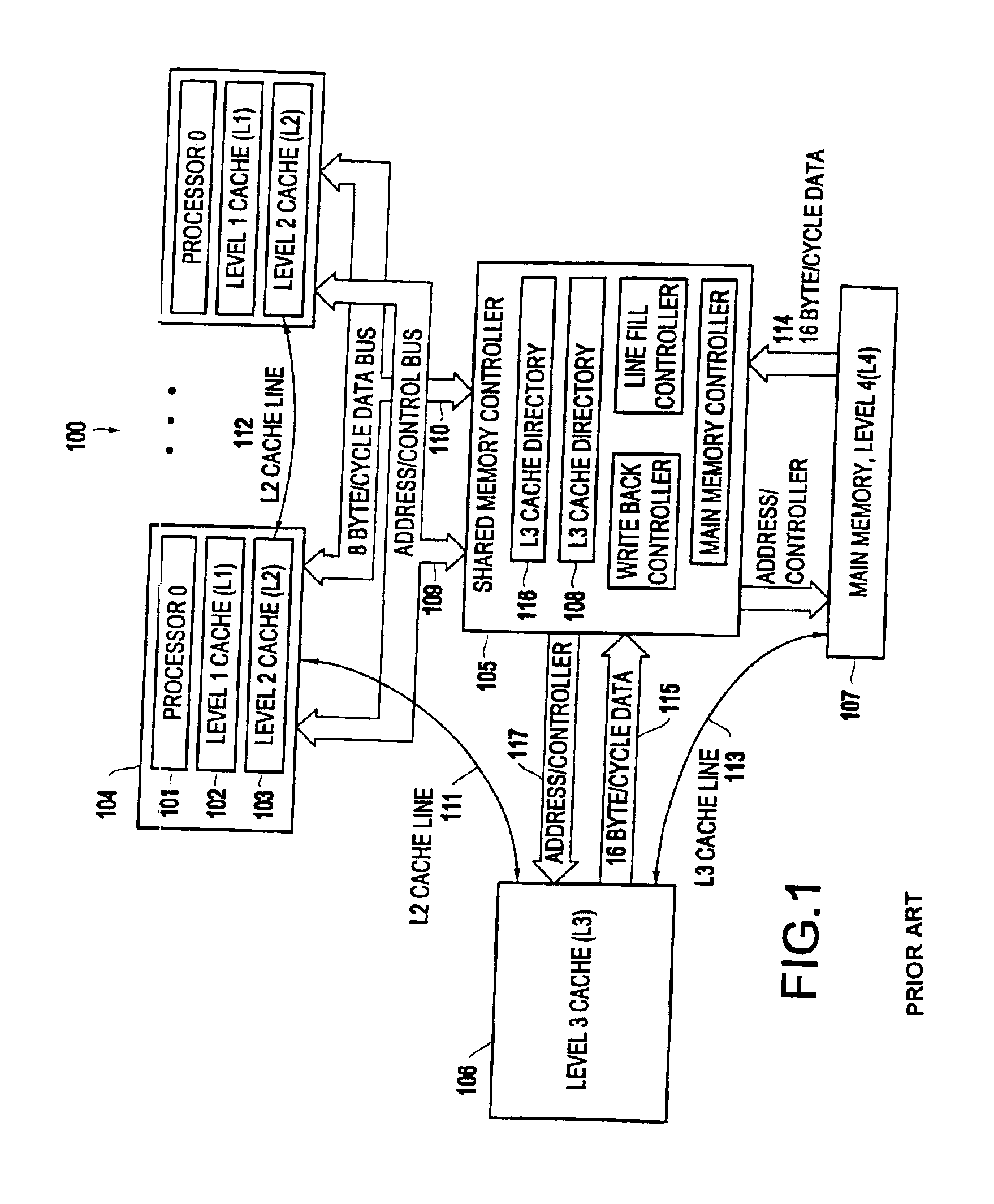Prioritizing and locking removed and subsequently reloaded cache lines
a cache line and priority locking technology, applied in the field of cache memory in computer systems, can solve the problems of lower cache hit rate, processor stall, and inefficiency of computer memory systems that employ inclusive set-associative caches with lru replacement policies, so as to avoid the inefficiency described above and lower cache hit rate
- Summary
- Abstract
- Description
- Claims
- Application Information
AI Technical Summary
Benefits of technology
Problems solved by technology
Method used
Image
Examples
Embodiment Construction
[0022]Referring to FIG. 1, a block diagram of a prior art computer system 100 is shown. The computer system includes a one or more processors 101 with level 1 102 and level 2 103 local caches forming a processor node 104, each connected to a common shared memory controller 105 that provides access to the shared level 3 106 cache and associated directory 116, system main memory 107 representing the last level of a four level memory hierarchy. The cache control 108 is connected to the processor address bus 109 and to the data bus 110. The processor data bus is optimized and primarily used for transporting level 2 cache data lines between a level 2 cache and the level 3 111 and / or another level 2 cache 112. The main memory data bus 114 is optimized for, and primarily used for transporting level 3 cache data lines between the level 3 cache and the main memory 113. The level 3 cache data bus 115 is used for transporting both level 3 and level 2 data traffic, but is optimized for the leve...
PUM
 Login to View More
Login to View More Abstract
Description
Claims
Application Information
 Login to View More
Login to View More - R&D
- Intellectual Property
- Life Sciences
- Materials
- Tech Scout
- Unparalleled Data Quality
- Higher Quality Content
- 60% Fewer Hallucinations
Browse by: Latest US Patents, China's latest patents, Technical Efficacy Thesaurus, Application Domain, Technology Topic, Popular Technical Reports.
© 2025 PatSnap. All rights reserved.Legal|Privacy policy|Modern Slavery Act Transparency Statement|Sitemap|About US| Contact US: help@patsnap.com



